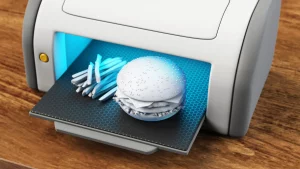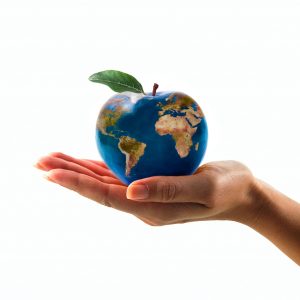Introduction
As the global population swells and climate change threatens food systems, technology and innovation stand as beacons of hope in the realm of nutrition and food security. Biotechnology, precision agriculture, and digital solutions are pioneering a revolution in the way we grow, distribute, and consume food. This article explores how these advancements are reshaping the future, offering a glimpse of a more nourished world.
1. The Promise of Biotechnology
Genetic Modification: Biotechnology enables the modification of crop genes, leading to hardier, more nutritious plants.
Disease and Pest Resistance: Crops engineered for disease and pest resistance reduce yield losses, contributing to food security.

2. Precision Agriculture: Targeted Nourishment
Data-Driven Farming: Precision agriculture leverages data from satellites and sensors to optimize crop management.
Reduced Waste: Accurate data enables the judicious use of resources, minimizing waste and environmental impact.
3. Aquaponics and Hydroponics
Soil-Free Farming: Aquaponics and hydroponics grow crops without soil, conserving water and enabling year-round production.
Urban Agriculture: These methods support urban farming, providing fresh produce close to consumers.
4. Vertical Farming: Reimagining Agriculture
Stacked Growth: Vertical farms grow crops in multiple layers, maximizing yield and minimizing space requirements.
Reduced Transportation: Urban vertical farms reduce the carbon footprint of food distribution.
5. Digital Solutions for Smallholders
Access to Information: Digital platforms provide smallholder farmers with vital information, from weather forecasts to market prices.
Financial Inclusion: Digital payment systems enable financial access for smallholders, enhancing their resilience.
6. 3D Printing for Food
Customized Nutrition: 3D printing technology can tailor food products to individual nutritional needs.
Reduced Food Waste: On-demand food production minimizes waste.
7. Cultured Meat
Sustainable Protein: Lab-grown meat offers a more sustainable protein source with lower environmental impact.
Animal Welfare: Cultured meat reduces the need for animal farming.
8. Blockchain for Food Traceability
Transparent Supply Chains: Blockchain technology enhances transparency, allowing consumers to trace the origins of their food.
Food Safety: Blockchain can improve food safety by quickly identifying sources of contamination.
9. Nutrigenomics: Personalized Nutrition
Individualized Diets: Nutrigenomics analyzes an individual’s genetic makeup to create personalized nutrition plans.
Chronic Disease Prevention: Personalized diets can reduce the risk of chronic diseases.
10. The Challenges and Concerns
While technology and innovation hold great promise, they also face challenges:
- Access Barriers: Not all communities have equal access to technology and its benefits.
- Ethical Concerns: Technologies like genetic modification and 3D printing raise ethical questions about their long-term impacts.
11. Shaping a Nourished Future
In a world with complex food security challenges, technology and innovation offer hope:
- Sustainable Agriculture: Biotechnology and precision agriculture enhance the sustainability of food production.
- Efficiency and Access: Digital solutions and vertical farming improve access to nutritious food.
- Personalized Nutrition: Nutrigenomics and 3D printing pave the way for customized, nutritious diets.
Image By:https://th.bing.com
Conclusion
Technology and innovation are catalysts in the journey toward a nourished world. From genetic modification that enhances crop resilience to precision agriculture that optimizes resource use, these advancements are reshaping the way we produce and consume food. As we embrace these cutting-edge solutions, we move closer to a future where food is not just abundant but also tailored to individual needs, leaving no one behind. Food security is not just a dream; it is a tangible, achievable reality in the age of technology and innovation.











